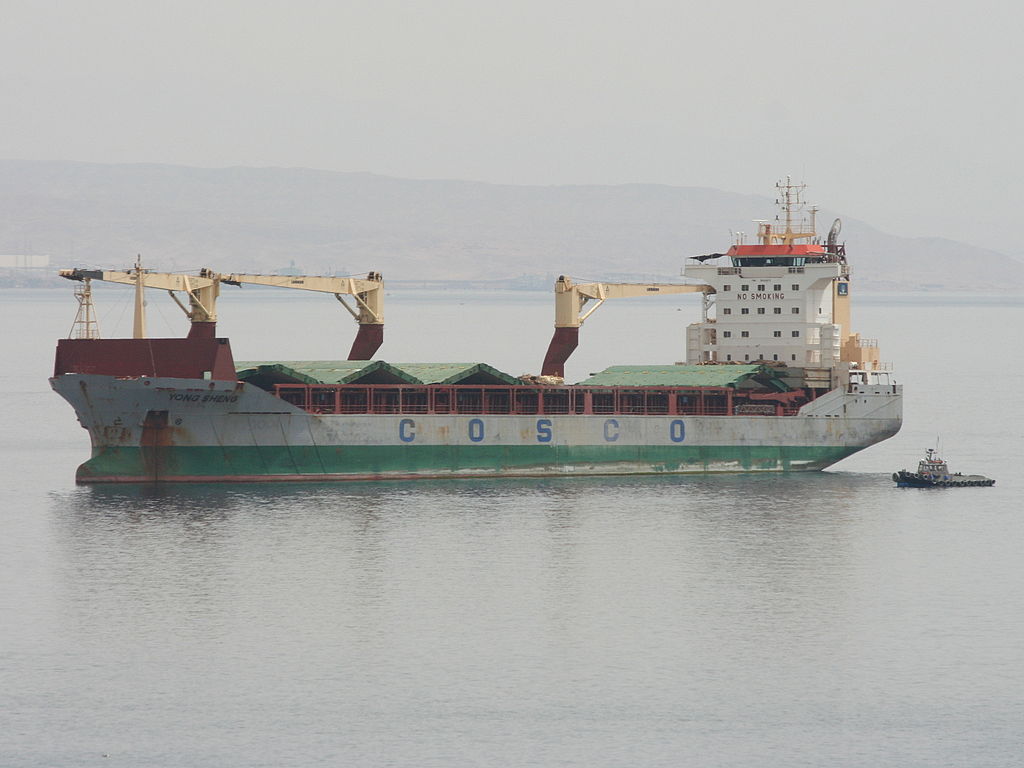Evaluation of the Arctic Shipping Season 2013

Yong Sheng in the Bay of Eilat. Photo: Oyoyoy
The 2013 shipping season along the Northern Sea Route (NSR) concluded in late November when the Russian-flagged “Indiga” reached its port of destination on 27 November 2013. The expectations as to the increases in Arctic transit shipping along the NSR are indeed huge – volumes shipped along the NSR are predicted to grow to 4 million per year in 2015, 65 million tons in 2020 and even 120 million tons in 2030, predominantly due to the rapid growth of oil and gas development in Russia.1) Against this background it is necessary to give a thorough analysis of this year’s shipping season in order to get an idea about the accurateness of such predictions.2)
This year’s shipping season indeed started five days later than the 2012 season. The first ship to use the NSR set sail on 25 June 2013 in comparison to 20 June in 2012. In contrast, the season in 2013 lasted a few days longer – the last ship to take the NSR in 2013 departed from its homeport on 17 November 2013, while the last ship in 2012 departed five days earlier on 12 November 2012. So in total, both shipping seasons were of exactly the same length with 146 days.
In terms of actual transits, 2012 saw 46 vessels using the route while in 2013 71 ships took the NSR, an increase of 54%. While this percentage looks impressive, we have to keep in mind that we still deal with quite small absolute numbers. In contrast, the Suez Canal has around 18,000 transits per year and the Panama Canal about 13,000.
Furthermore, it is enlightening to take a closer look at some of the routes that the vessels took. In fact, 17 “transits” only started or ended in Pevek in Chukotka, and did not come from or go down to the Bering Strait. This is remarkable given that the NSR is defined in Russian law as a set of marine routes from Kara Gate, south of Novaya Zemlaya, in the west to the Bering Strait in the east.3) Also Khatanga Bay and Anabar Bay in the Laptev Sea are mentioned once and twice, respectively as a port of destination, which is not anywhere close to the end points of the NSR definition.
The volume of cargo has hardly increased between 2012 and 2013, from 1.26 million tons of cargo to 1.36 million tons, i.e. only an increase of 7.5%. Given the expected volume increases as stated above, this is a rather surprising result.
Concerning the type of cargo, 2013 saw an increase in liquid cargo (in both years the predominant cargo – 57% in 2012 and 44% in 2013 of all cargo type vessels) and ballasting. Also general cargo has become stronger in 2013 and one LNG tanker used the route. Repositioning remained the same as well as fishing vessel usage (only 1 in both years).
While more foreign countries used the route as flag states – 7 states in 2012 and 11 in 2013 – the number of foreign flagged vessels actually decreased from 2012 to 2013 (28 in 2012 and 25 in 2013). In other words, the increase in vessel number is completely due to increased Russian usage of the route. So there is currently an increasing Russian usage of the route, while international interest in using the NSR is rather humble (in 2012 39% of the vessels using the route were under a Russian flag, increasing to 65% in 2013).
References